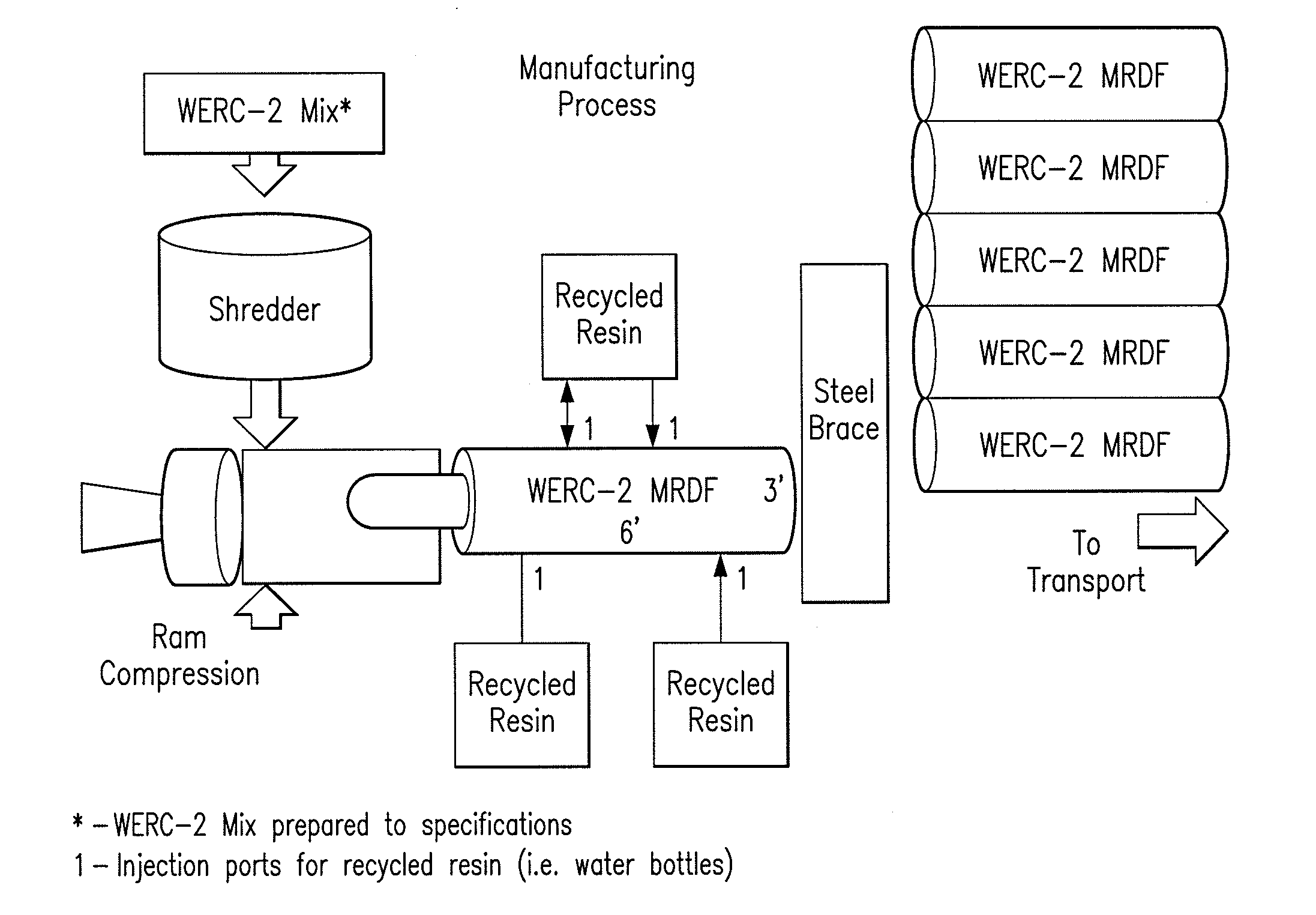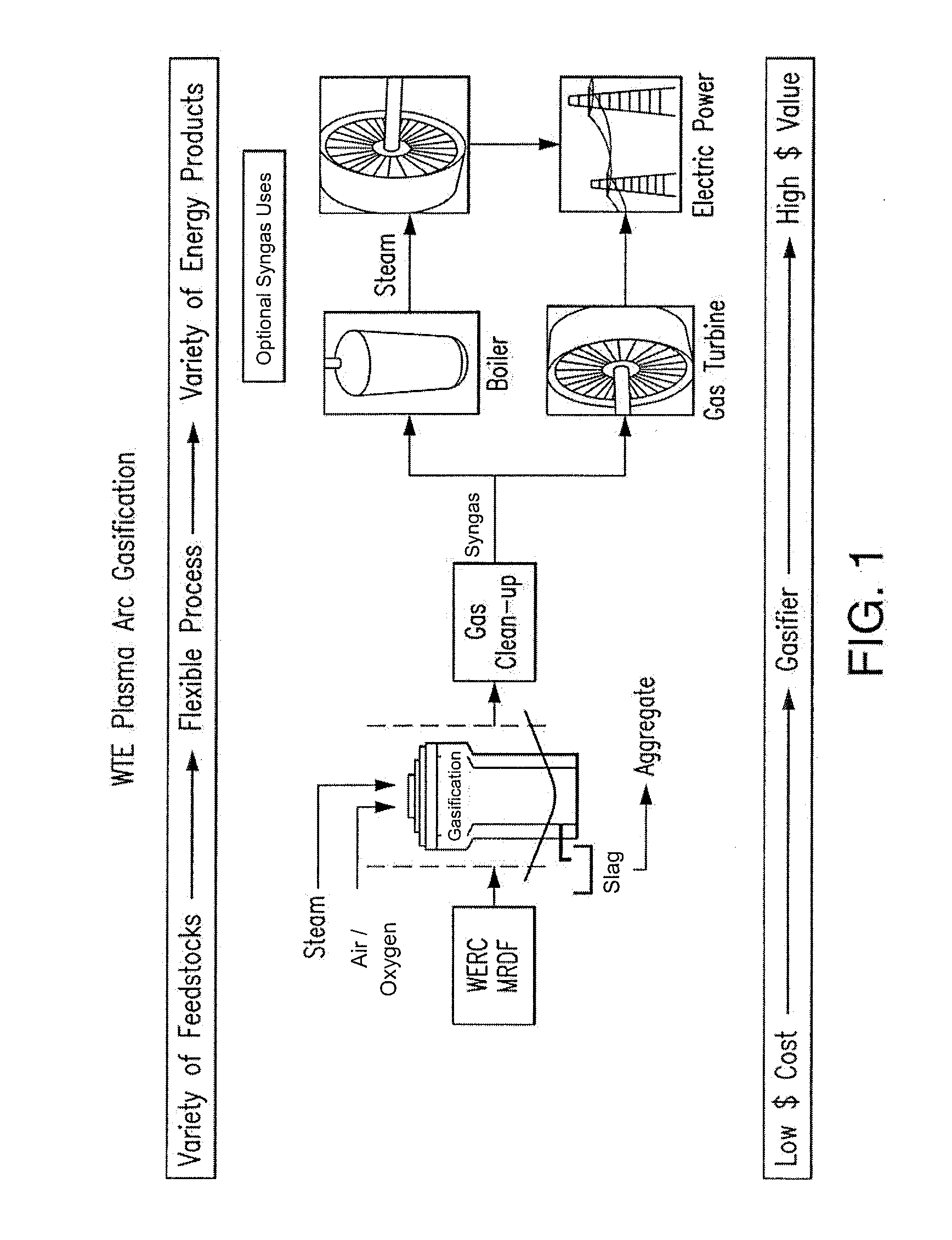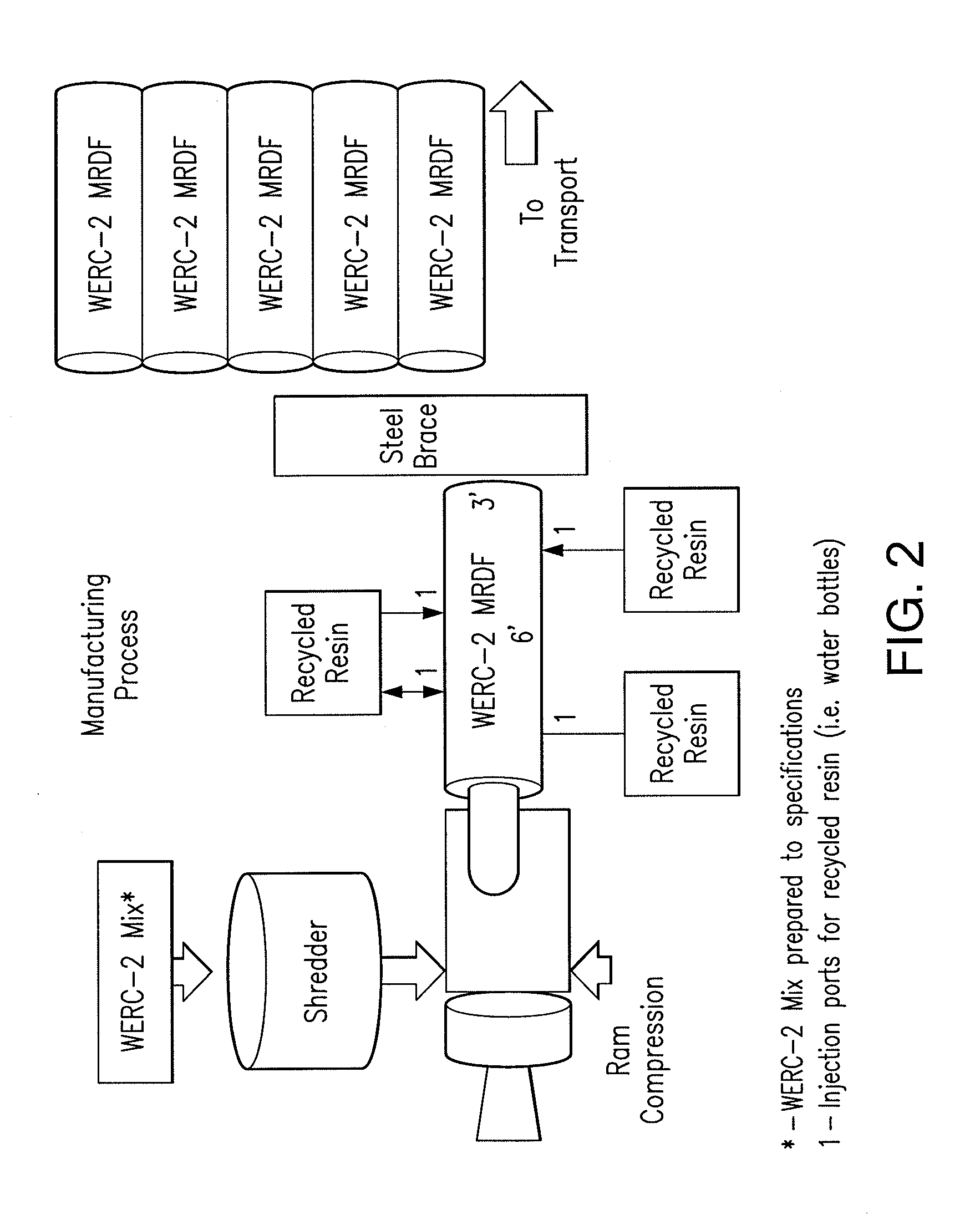System and Method for Manufacturing Various Waste and Municipal Solid Waste for Producing a Solid Fuel
a technology of municipal solid waste and waste gasification, which is applied in the field of energy gasification and combustion systems and methods, can solve the problems of inconsistent resulting gas production, large amount of industrial, manufacturing and agricultural businesses producing solid waste, etc., and achieves the effects of reducing various emission issues, facilitating longer term transportation and storage, and enhancing energy generation efficiency and throughpu
- Summary
- Abstract
- Description
- Claims
- Application Information
AI Technical Summary
Benefits of technology
Problems solved by technology
Method used
Image
Examples
example 1
[0037]Initial manual and mechanical disassembly of the solid wastefeedstock for removal of non-combatable material will be performed based on size and characteristics to ensure maximum BTU and caloric value.
[0038]Further separation and mixing will occur by hydraulic methods. Raw material is further agitated to expose the base components / elements of the solid waste raw material.
[0039]Material is sorted for primary size, combining agitation by placing the raw material on a vibratory screen, with a sieve of 1 foot minus passing the screen.
[0040]Material not passing through the screen will be further mechanically sorted into primary organic and inorganic categories. Organics will undergo a uniform grinding of the raw material through a primary shredding
[0041]The organics material will be conveyed to re-incorporate the raw solid waste at the point of initial separation.
[0042]Inorganics not passing the initial 1′ primary screen will be resorted for recyclables and non-desirable (hazardous...
example 2
[0068]A solid fuel was produced using methods in accordance with the instant invention. The desired analysis of the solid fuel is outlined in Table 2.
TABLE 2FUEL COMPOSITION BTU / RANGE 10,500-14,500DESIRED ULTIMATE ANALYSIS ON DRY BASIS:ASHC68% H8.1%ON1.0%SCLFLH2O5.0%HGBased on a average 5.0% moisture content
[0069]Examples of the actual analysis of the solid fuel can be seen in Table 1.
TABLE 1SAMPLE IDENTIFICATIONMUNICIPAL WASTEDATE REPORTED: 03 / 26 / 10%%%% FIXEDBTU / %MOISTUREASHVOLATILECARBONLBSSULFURAS REC'D0.882.1491.085.90126830.07DRY BASIS—2.1691.895.95127960.07M-A-FREE13078Note: Sample Tested using ASTM Volume 05.06 for Gaseous Fuels;Coal and CokeULTIMATE ANALYSIS(% DRY BASIS)ASH2.16HYDROGEN7.54CARBON66.41NITROGEN0.61SULFUR0.07OXYGEN23.21CHLORINE0.41
[0070]As shown in Table 1, solid fuel produced in accordance with the instant invention surpasses desired dry analysis targets.
example 3
[0071]Additional samples of solid fuel were produced in accordance with the methods described herein. The analysis of these samples is shown in Tables 3 and 4.
TABLE 3Weight %AsDryAsDryPROXIMATE ANALYSISReceivedBasisULTIMATE ANALYSISReceivedBasis% MoistureD33022.17*****% MoistureD33022.17*****% AshD31744.414.51% CarbonD537365.8967.35% VolatileD317592.2894.33% HydrogenD53738.128.30% Fixed CarbonD31721.131.16% NitrogenD53731.911.95BTUD58651348313782% ChlorineD67210.150.15MAF-BTUD318014433% SulfurD4239B0.050.05% Total SulfurD4239B0.050.05% AshD31744.414.51SULFUR FORMS% Oxygen (Diff.)D317617.3017.69% PyriticD2492**********(Chlorine D6721 Dry Basis ug / g 1471)% SulfateD2492**********MINERAL ANALYSISD6349% IgnitedBasis% OrganicD2492**********Phos. Pentoxide,P2O5*****% Total SulfurD4239B0.050.05Silica,SiO2*****WATER SOLUBLEFerric Oxide,Fe2O3*****% Na2OASME1974**********Alumina,Al2O3*****% K2OASME1974**********Titania,TiO2*****% ChlorineASME1974**********Lime,CaO*****Alkalies as Na2OASME1974*...
PUM
| Property | Measurement | Unit |
|---|---|---|
| primary size | aaaaa | aaaaa |
| size | aaaaa | aaaaa |
| physical characteristics | aaaaa | aaaaa |
Abstract
Description
Claims
Application Information
 Login to View More
Login to View More - R&D
- Intellectual Property
- Life Sciences
- Materials
- Tech Scout
- Unparalleled Data Quality
- Higher Quality Content
- 60% Fewer Hallucinations
Browse by: Latest US Patents, China's latest patents, Technical Efficacy Thesaurus, Application Domain, Technology Topic, Popular Technical Reports.
© 2025 PatSnap. All rights reserved.Legal|Privacy policy|Modern Slavery Act Transparency Statement|Sitemap|About US| Contact US: help@patsnap.com



